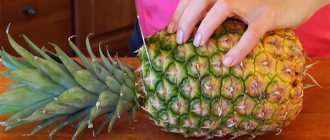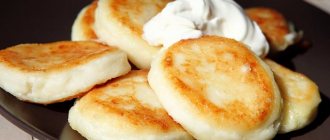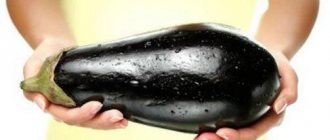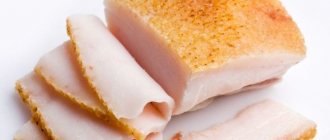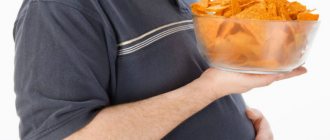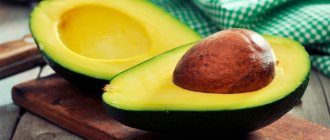Plum is known for its laxative properties. The fruit is not only possible, but also should be consumed if the baby or mother is constipated. However, you should add plums to the menu gradually and in small doses. Otherwise, you can get the opposite effect - irritation of the intestinal mucosa and the appearance of loose stools. In addition, the presence of beta keratin sometimes causes an allergic reaction.
Plum is on the list of foods that can be consumed after 3-4 months of a baby’s life. During the first months, a newborn’s body is very weak, so doctors do not recommend eating fruit. During this period, you can eat baked apples or bananas. And already 3 months after birth, the diet is diluted with other products.
Fruits that are recommended to be consumed three months after giving birth:
- Apples are a product that can be consumed 5-6 days after the baby is born. However, only baked and preferably from your own garden. An apple will fill the body with energy and improve your mood;
- Pear is also consumed baked. After 3-4 months it can be consumed raw, only without the peel;
- Peach and apricot will increase stress resistance and strengthen the nervous system. By the way, dried apricot (dried apricot) will be healthier and safer for a nursing mother. You can also start consuming dried fruits after 3-4 months from the baby’s birth;
- Banana is the only permitted exotic fruit. The fruit contains a large amount of potassium. It will charge the body with positive energy and will not harm the baby;
- Dark-colored berries rarely cause allergies in a newborn. At the same time, they contain vitamin C, which will strengthen the immune system and help fight colds. Such berries include cherries, black currants, cherries;
- Plum also has a lot of useful elements and vitamins. It activates intestinal function and prevents the occurrence of anemia.
Do not forget about fruits, the consumption of which is prohibited while breastfeeding. During lactation, you should not eat exotic fruits (except bananas), citrus fruits, watermelons and brightly colored berries (strawberries and raspberries). These species contain strong allergens. In addition, imported fruits often do not meet safety conditions.
Possible harm from consuming plum compote while breastfeeding
Undoubtedly, plum compote is a truly healthy drink, but do not forget that, like any other product or drink, this decoction also has a number of side effects.
First of all, we should mention the laxative properties of such a compote
Quite often, nursing mothers notice that after drinking plum broth, the baby, and the woman herself, experience attacks of diarrhea, abdominal pain and other similar conditions. This is primarily dangerous due to dehydration, and therefore any similar symptoms should cause a complete refusal of plum compote for a while.
Also, plums and compote made from them, although rare, can cause allergies in babies
The fact is that the berries contain a special dye that can be perceived incorrectly by the baby’s body. Most often, this reaction is accompanied by the appearance of red spots on the skin, difficulty breathing and coughing.
Plum compote has a powerful diuretic effect
And all thanks to the presence of a large amount of potassium in it. To some extent this is good, but if a nursing mother suffers from urolithiasis, such an intense discharge of fluid can provoke an attack and blockage of the urinary canal.
Plums contain quite caustic fruit acid
The acid makes compote from such fruits undesirable for those women who suffer from ulcerative diseases of the gastrointestinal tract. Plum compote can provoke an exacerbation of the disease and deterioration of the condition of the young mother.
Effect on the body
During breastfeeding, plum helps relieve constipation and improve bowel function. In addition, plum is called the elixir of youth. Regular use of the product will maintain health, figure and beauty.
The composition of fruits contains a large number of useful substances and vitamins, which enter the baby’s body along with breast milk.
Vitamins and macroelements
Beneficial effect
Despite the usefulness of plums during breastfeeding, it can also cause a negative reaction. The baby may develop allergies or colic, or an upset stomach. To avoid problems, follow the rules for eating plums during lactation.
Rules for eating plums while breastfeeding. When to introduce the product into the diet?
The period of breastfeeding is very important for any mother, because she needs to give everything her baby needs and not cause harm.
Therefore, food products for a nursing mother should be carefully selected, including fruits. Plum is one of the fruits that can be consumed during breastfeeding, because it is not only healthy, but also has low allergenicity.
The article describes in detail the nuances of eating plums during breastfeeding.
Is it possible to eat fruit while breastfeeding?
A nursing mother can introduce plums into her diet from 3–4 months after the birth of her baby. It can be either raw or dried fruit, or in the form of jam or compote. But don’t get carried away: plums in large quantities can cause diarrhea. The norm is 3-4 pieces per day or a glass of compote.
A mother should try to introduce a new product into her diet gradually to make sure that it does not cause an allergy in the child. What are the advantages of dried apples over fresh ones for nursing mothers? Read the link.
Is it possible to eat fruits in the first month of breastfeeding of a newborn?
Experts do not recommend trying plums during breastfeeding in 1 and 2 months after the birth of the child. The child’s digestive tract is just getting used to eating milk and is populated with the necessary beneficial microorganisms. And many fruits, including plums, can cause colic in a baby.
a nursing mother to limit herself to baked apples or bananas (including dried ones) during this time. Even in compote as part of a mixture, plums can have a negative effect. Therefore, it is better to wait until the child’s digestive system is functioning properly - at 3-4 months of his life.
How should a nursing mother of a 3-4 month old baby consume fresh fruit?
When the baby’s body has already become a little stronger, has adapted to the surrounding conditions, and all its systems have established their functioning, he is ready to accept new foods through his mother’s breast milk. Therefore, even if a child gets a negative reaction to plums (skin rashes, red crusts, indigestion, etc.), the body will be ready to quickly cope with it.
Mom should not rush when introducing a new product: it is best to start with 1 glass of plum compote per day. In this form, this fruit will be absorbed most carefully. As for fresh fruits, even if the baby did not react to the plum, the mother should not get carried away with it. You need to limit yourself to 2-4 fruits per day.
Compote
As part of a compote, plums will not be able to affect mother and child as much as they do fresh, so they will only benefit everyone. All mom needs to do is prepare this drink correctly. For plum compote you will need:
- 500 grams of plums;
- half a liter of clean water;
- 1-2 tablespoons sugar.
Preparation:
- Wash the fruits thoroughly, cut them into pieces and remove all seeds.
- Let the fruits boil in water for a couple of minutes and then add sugar to it.
- Reduce heat and simmer the compote, covered, for 5–7 minutes.
- Cool the finished drink.
If the baby is not prone to allergic reactions, then you can add spices to the finished compote: a little ground cinnamon or a little lemon zest to taste.
If you drink one glass a day, this amount of drink will last for 2-3 days. Of course, during the cooking process, some of the beneficial vitamins and microelements will be destroyed, but the secret is that you need to cook the fruit for no longer than 7 minutes. Then some of the benefits from the plums will remain and be passed on to the baby.
Read our next article on how to cook delicious and healthy apple compote.
Benefits of the product and its effect on lactation
A nursing mother must know what benefits she can get from the product in order to pass it on to her baby. Plums are very healthy fruits . They contain many vitamins and microelements. For example:
- vitamins A, B, C;
- nicotinic acid;
- phosphorus;
- iron;
- magnesium;
- potassium;
- calcium.
This means that the plum is capable of:
- establish regular bowel function and help forget about constipation;
- raise hemoglobin levels and relieve anemia;
- have a diuretic effect, cleanse the lymphatic system, reduce swelling;
- strengthen blood vessels and lower blood pressure;
- improve the general condition of the face and skin;
- influence the rate of energy metabolism;
- have a slight sedative effect.
Is it possible to eat pears, apricots or kiwis already in the first month of breastfeeding? Read the linked articles.
Can it cause harm?
By themselves, these fruits in small quantities will not cause harm to mother and baby. But you need to be careful and know what the consequences are if you violate the recommended amount of fruit per day.
If a woman ate plums quite regularly during pregnancy, then the baby is less likely to have an allergic reaction to this product.
Dangers for the mother
A nursing mother should remember that the amount of fluid she drinks affects the production of breast milk. If you drink more plum compote than recommended, you may get more milk. The child will not be able to eat everything, this is fraught with the appearance of lactostasis.
In addition, there are diseases in which it is better for mothers to stop eating plums. These include:
- diabetes mellitus (fruits contain quite a large amount of sugars);
- gastritis (plum increases the concentration of gastric juice);
- allergic reactions (individual reaction of the body);
- rheumatism (the fruit has a laxative effect and removes a lot of fluid from the body);
- urolithiasis (a lot of fluid leaves the body after eating plums).
Dangers for the baby
Like any other product that a mother consumes, plum can negatively affect the child. The baby may have:
- stomach upset;
- allergic reactions (rashes and redness on the skin, formation of crusts, reaction from the gastrointestinal tract, etc.);
- colic, painful for the child.
Rules for introducing into the diet
To introduce plums into your diet, mother should slowly follow the following algorithm:
- Eat a small piece of this fruit in the morning.
- Over the next 2 days, monitor your baby to see if he has any reaction.
- If there are no negative changes, then you can safely increase the dose of the product.
- Plum has a laxative effect, so you should not eat more than 2-3 fruits a day, otherwise your child will have an upset stomach. You can replace them with one glass of plum compote.
If the baby has some kind of allergic reaction to the plums eaten by the mother, then the fruit should not be eaten for several months. Only after this time can the attempt be repeated.
Recipes
To prevent mother from getting bored with fresh plums during lactation, you can diversify your menu and add several simple and tasty plum dishes.
Homemade jam
For 1.5 kg of jam you will need:
- 1 kg yellow plums;
- 1 kg sugar.
Preparation:
- Wash the fruits, cut them into pieces and remove all the seeds.
- Place the plums in a saucepan, add sugar and leave for a couple of hours until the juice from the fruit appears (this will add juiciness to the jam).
- Place the pan on low heat. Stirring, bring the mixture to a boil.
- Skim off any foam and remove the pan from the heat. Leave the jam to cool for several hours.
- When it has cooled, put the pan back on low heat and wait until it boils.
- Repeat the entire cycle a third time.
- Pour the cooled prepared jam into suitable containers.
Plum jam
It is distinguished by its more delicate consistency compared to jam. To make this jam you will need:
- 1 kg of ripe plums;
- 1 kg sugar;
- half a teaspoon of citric acid.
Preparation:
- Wash 1 kg of plums, remove all the seeds and peel.
- Cut the pulp into small pieces and place them in a saucepan.
- Pour in 1 cup of boiling water, bring to a boil and stir for 20 minutes, keeping the heat low.
- Gradually stir in 1 kg of sugar.
- Remove the foam and simmer the plum for another 40 minutes.
- Add half a teaspoon of citric acid to the prepared hot jam.
- Cool and pour into suitable containers.
Plum is a product that is not only rich in vitamins and microelements, but also almost does not cause allergies in babies whose breastfeeding mothers eat it. This means that if the norm is observed (2-3 fruits per day or 1 glass of compote), plums will only benefit mother and baby.
Source: https://umnyash.com/rebenok-do-goda/grudnoe-vskarmlivanie/mozhno-li/frukty/slivu.html
How to eat plums for a nursing mother
- Introduce plums into your diet gradually. Three months after the baby is born, try a small piece of fruit in the morning. Then observe the baby’s reaction for two days;
- If you feel good, then you can continue to eat plums. If the reaction turns out to be negative, then it is better to postpone the appointment for two to three months;
- Use plums in moderation - no more than two pieces per day or one glass of plum compote;
- Doctors also recommend eating dried plums. Dried fruit retains its beneficial properties. At the same time, it will make a delicious decoction or compote. Compote is easier to digest and has less risk for the baby;
- Choose your plums carefully. It is better to use homemade fruits without preservatives, dyes and other chemicals;
- Buy seasonal fruits from the store. The fruit should be ripe and elastic. By the way. the older the tree, the better the quality of the fruit;
- Make sure that there are no damages or dents on the fruits. Cracked fruit will quickly rot or become moldy;
- There should be a small white coating on the plum, which can be easily removed by wiping the fruit. This indicates correct assembly. But white streaks and spots indicate the presence of pesticides.
Doctor Komarovsky's opinion
The children's doctor Komarovsky, beloved by all of us, says that everything you ate before and during pregnancy, eat for your health! And what you haven’t tried before, you don’t need to start during breastfeeding. If a plum causes anxiety in a child, then it should not be excluded from the diet, but reduced to a minimum. And continue to try to introduce the minimum amount per day.
May breastfeeding bring you only joy. Don’t perform heroic eating feats, listen to your body and your child’s well-being.
Delicious recipe! Buns with pumpkin and cottage cheese
Compote recipe for a nursing mother
We offer mothers a simple recipe for plum compote, which will be useful for a child and a nursing woman. You will need:
- 0.5 kg plums;
- 0.5 l of water;
- 1-2 tablespoons of sugar.
Rinse the fruits well, cut into halves and remove the seeds. Keep the fruit in boiling water and then add sugar. Cook for 5-7 minutes with the lid closed. If desired, use cinnamon or lemon zest along with sugar. But only if the baby does not have allergies.
It is important that a nursing mother’s diet includes at least 250 g of fruits and berries per day. Plum is one of the most beneficial fruits for breastfeeding (BF) and is also low-allergenic (true for yellow varieties).
Photo: Depositphotos.com. Author: SerbBgd.
Are they allowed in a child’s diet?
Plum is not the best option for starting complementary feeding. Only after the baby gets used to carrots, pears and apples can plum fruits be gradually introduced into the diet.
At what age is it acceptable to give it to a baby?
The introduction of plum complementary foods will depend on the type of feeding . If a child is fed breast milk from the first days of life, it is better to start giving plum at the age of 8-9 months. If the baby eats formula, his body can positively accept complementary foods earlier - at 6-7 months.
Plum in its usual form is not suitable for baby food. It is best to prepare puree from fruits:
- Peel fresh plums and grind thoroughly in a blender or using a meat grinder.
- You can add a small amount of breast milk or sugar to the pulp if the fruit is too sour.
It is better to start introducing your baby to light varieties of plums, and then you can introduce dark plums into the diet. In addition to purees, your baby will also benefit from compotes - from fresh or dried fruits.
Important! From the age of one and a half years, plums are used as a filling for various types of baked goods.
Useful properties for a child
Plum is a source of a large number of mineral compounds and organic acids necessary for the active growth of a young organism. They contribute to the formation of healthy and strong bone tissue, teeth and skin.
The fruit will help increase the body's defenses, which is especially important for children with weakened immune systems. Subject to moderate consumption, the product gently cleanses the intestines, increases appetite and helps fight helminths.
If a child is undergoing drug therapy, plum compote will help quickly remove toxins and restore health.
What's the benefit?
For Mom
During breastfeeding, it is advisable for a woman to include fresh or dried plums in her diet for the following reasons:
- Improves complexion, renews skin cells.
- Strengthens blood vessels and fights high blood pressure.
- Helps with constipation.
- Removes excess fluid from the body due to its diuretic effect.
- Raises hemoglobin levels and prevents the development of anemia.
- Has a beneficial effect on vision.
For babies
- Activates intestinal motility and reduces stomach acidity.
- Vitamin A promotes rapid tissue repair in case of bruises.
- Vitamin B improves metabolism.
- Vitamin C strengthens the baby’s immunity and regulates the functioning of nerve cells.
- Iron maintains the required level of hemoglobin in the blood.
- Phosphorus is essential for bones and ensures healthy growth.
- Calcium strengthens teeth, nails, and hair.
Many women report that changing their diet has helped relieve constipation in infants. In addition to plums, the list of recommended foods includes: apple juice, prunes, olive oil, barley, apricots, peaches, pears and spinach.
In what cases can they be harmful?
Contraindications to consuming plums during lactation are:
- diabetes - the fruit is low in calories, but still incredibly sweet. For comparison: in 100 gr. This product contains about 11 grams. sugar, which is 2 tsp;
- rheumatism and gout - do not forget about its laxative effect and removal of fluid from the body;
- urolithiasis - and again it’s all about removing excess fluid from the body;
- gastritis and other ailments accompanied by high acidity.
According to doctors, it is not recommended to eat more than 6 plums in one sitting. Simply because they can cause heaviness in the stomach, pain, and diarrhea even in a healthy person.
Opinions of breastfeeding consultants
Yulia Palchevskaya, Minsk: “Plum is an indispensable assistant in the fight against constipation, cleanses the body of harmful substances.”
Rada Melnikova, Moscow: “There is no diet for a nursing mother. The main rule for any unknown product is to take a little bit at a time. Watch the baby's reaction. If it is missing, feel free to introduce new food into your diet.”
Gulfiya Korneeva, Kazan: “Plums are not prohibited during breastfeeding. But you don’t need to eat a lot at once so as not to get a laxative effect.”
Recipes
Fresh fruit compote
- Take 0.5 kg of plums and wash thoroughly.
- Cut in half and remove the pits.
- Pour 0.5 liters of water into a saucepan and bring to a boil.
- When the water boils, place the fruit in it.
- Add 2 tbsp. l. sugar, if desired - a little cinnamon or lemon zest (if the child is definitely not allergic to these ingredients).
- Cover with a lid and cook for 5-7 minutes. Cool to desired temperature.
Prune compote
A drink made from dried fruits, especially during the cold season, will save the mother’s body from vitamin deficiency.
- Thoroughly rinse 200 g of pitted prunes.
- Place in a saucepan with hot water (0.5 l).
- After boiling, cook for 20 minutes over low heat.
- If desired, add a little sugar, but even without it the compote will taste good.
Amber jam
To get 1.5 kg of jam, you need 1 kg of yellow plums and 1 kg of sugar.
- Carefully sort and wash the fruits (you can soak them in a weak solution of baking soda for half an hour), remove the stalks.
- Cut the plums in half and remove the pits.
- Place in a saucepan, add sugar and leave for 2-3 hours so that the fruit releases its juice (this will make the jam tastier).
- Place the pan over low heat. Stirring constantly, bring the water to a boil.
- Remove the foam and remove the pan from the stove.
- After cooling the jam for 2-3 hours, put it back on low heat. Stirring, gradually bring to a boil. Skim off the foam and cool.
- The last, third time, bring to a boil.
- Wash the jars and lids thoroughly and scald with hot water.
- Pour the jam into prepared jars and seal.
Some housewives prefer to use pitted plums in preparations. The delicacy is less sweet and more aromatic, and preparation takes less time.
Thus, high-quality and properly prepared plum jam with pits will not cause serious harm to health, provided that it has not been left waiting for many years.
Is it possible to eat plums while breastfeeding at 1, 2, 3, 4 months, reviews from forums
During breastfeeding, plum is one of the healthy summer fruits.
Plum: yes or no during lactation?
Interesting fact: while studying the beneficial properties of plums, nutritionists came to the conclusion that in the form of jam and dried fruit it is more nutritious than freshly picked fruits.
Plums are actively used in cooking: jams and compotes are cooked, baked, dried, and prunes are made. The fruit contains many vitamins and minerals (vitamins E, B, A, potassium, zinc, iron, phosphorus), as well as acids (folic, nicotinic).
A nursing woman receives the following benefits from the fruit:
- the fruit helps the skin regeneration process and improves its color;
- will help reduce mom’s blood pressure;
- strengthens blood vessels;
- will have a laxative effect;
- helps remove excess fluid.
But, despite the above, fruits are not recommended for people suffering from diabetes and gout.
Excessive consumption of fruits leads to negative consequences:
- allergic manifestations in a child. The baby may have intolerance to plums, which will be noticed within a few hours after feeding;
- diarrhea. Severe diarrhea causes dehydration, which is dangerous for the baby’s health;
- In some cases, fruits are the cause of colic in children.
It is better to consult with a pediatrician so that delicious fruits do not cause health problems for the baby.
Features of eating plums
Plums have a laxative effect, so a young mother is allowed to consume them in moderation. It is safe to eat fruits when the baby is constipated, but you should not overdo it (plums provoke diarrhea).
Take only fresh, high-quality plums. Before eating, inspect the fruit for damage from pests or diseases.
The first portion of plums is equal to one fruit, then, after feeding, we watch the baby’s reaction. A nursing woman should introduce no more than one new product every 2 days into her menu.
Otherwise, it will be difficult to determine what exactly the child’s body reacted to. Naturally, the older the child, the larger portion of plums a nursing mother can eat. If all is well, gradually increase the portion.
To relieve your baby from constipation, 2-3 pieces will be enough.
For nursing mothers, the following rules for eating plums can be distinguished:
- The first introduction of fruit before feeding is recommended when the baby reaches three months of age. In the first half, eat a small piece of fruit. Observe the child’s body’s reaction to the new product for at least 2 days. If any negative consequences appear, postpone eating the fruit for several weeks;
- the optimal dose is two fruits per day (or 200 ml of plum compote);
- Experts recommend introducing plums in dried form, because drying does not reduce the beneficial properties of the fruit. And dried fruit compote is more easily absorbed by the body of a nursing mother, and, accordingly, the child;
- It is better to choose homemade fruits, without dyes and nitrates;
- the older the fruit-bearing tree, the better the fruit;
- a cracked fruit quickly rots and becomes moldy;
- the presence of a white coating on the fruit indicates the absence of pesticides and correct assembly.
Prunes deserve special attention: when dried, a substance such as acrylamide is formed in the plum, a powerful carcinogen and neurotoxin. During transportation, to increase shelf life, it can be treated with toxic sulfur dioxide. If a young mother is not sure of the quality of dried fruits, then it is better not to risk her health again.
Compote and plum jam
Compote is often made from plums, which has a wonderful effect on the body. The recipe is very simple: you only need 500 grams of plums and a few tablespoons of sugar (to taste). Wash the fruit well, cut into two parts, removing the seeds. Then everything is poured into a container with boiling water and cooked for 5-7 minutes.
Plum jam will also require a little effort. A kilogram of plums is thoroughly washed and the seeds are removed from them. Then the fruit is placed in a saucepan, 900 grams of sugar are added and left for an hour to allow the sugar to be absorbed. Cook the mixture over low heat for an hour. All that remains is to cool and pour the finished jam into pre-sterilized jars.
Plums have a beneficial effect on mother and baby during lactation. But we must remember that, like any other product, fruits are introduced into the diet of a nursing woman with caution. If there are any doubts about this issue, it is better to consult a pediatrician.
Reviews from forums
Source: https://KrohaPuzz.ru/grudnoe-vskarmlivanie/slivy-pri-grudnom-vskarmlivanii.html
How to choose?
- strong and resilient;
- with a smooth surface, without dark spots;
- uniform color;
- no cracks;
- with a dry brown stalk.
Depending on the variety, plums may have shiny or matte skin. A thin white fluff on the surface is a sign of a recent harvest.
- The surface is matte or glossy. If dried fruits are perfect in appearance and shiny, you should not take them - most likely, they have been subjected to additional processing with glycerin or oil, which quickly oxidizes.
- Black color . Brown prunes are a sign of low-quality raw materials, possibly treated with pesticides.
- The peel is free of stains, abrasions or plaque.
- Fleshy and elastic fruits.
- They don't stick together.
- The smell is pleasant, not earthy.
- The taste is sweet and rich, not bitter.
- With the pit: best to remove just before cooking. Without it, the fruits deteriorate faster: harmful microorganisms enter them.
- Composition of packaged prunes: no dyes or additives.
Look for the BIO mark on the packaging, established by the European Union for a minimum level of chemical processing, or ORGANIC.
It is impossible to imagine summer without such a beloved and widespread fruit in Russia as the plum. She and her species - mirabelle, cherry plum - form an important part of the diet in the warm season. They will also be useful for nursing mothers. The period of breastfeeding is a very important and crucial moment in the life of any woman, because the main thing is not to harm the baby. You need to understand whether plums can be eaten by a nursing mother and how much is permissible to eat. Perhaps compote or jam would be healthier? You need to know the answers to these questions before the mother eats these fruits.
Introducing plums into the diet of a nursing mother
This fruit, as well as plum compote or jam made from it, can be eaten approximately 3-4 months after the baby is born. This should be done gradually, slowly. This is an approximate algorithm for introducing this fruit into the diet of a nursing mother:
- Before lunch, eat a piece of fruit, preferably a small one.
- For two days, monitor how the child reacted to such mother’s food.
- If there are no changes with the baby, you can safely eat plums, gradually increasing their quantity; If the baby has colic, bloating, gas or a rash, you should not eat the fruit for the next couple of months, then you can try again.
Plums must be introduced into the diet carefully and, even if the baby has no negative reactions, do not eat more than two or three fruits a day, otherwise the baby may experience an upset stomach
If everything is fine with the child, there is still no need to eat too many plums, because they are still laxatives and can cause upset in the baby. The best dose is 2 fruits per day. A good and safe alternative is 1 glass of compote per day, it is absorbed better.
Three rules to remember when choosing plums:
- Eat only seasonal plums.
- Give preference to elastic fruits with a uniform texture.
- The skin of the fruit should have a white coating that can be easily wiped off with your finger; if there are streaks or spots on the fruit, it means there are pesticides in it.
When and how to introduce it into the diet
No matter how much a woman would like to taste the taste of ripe, juicy berries in the first month after giving birth, it is better not to do this. Simply because plum is an allergen, and the baby’s vulnerable body will most likely react to its introduction.
Read the articles about how a baby might react to a nursing mother drinking beer or wine.
In the second month, pediatricians also do not recommend adding plums to the daily menu. They argue their point of view by the fact that it enhances intestinal motility and provokes the development of colic in the baby. And these are sleepless nights and capricious days. Is the stress worth the immediate desire?
In the third month, you can try to introduce the fetus into your diet according to all the rules of complementary feeding. At first, one berry eaten in the morning is enough. If the baby does not have any reaction in response to it, meaning rash, redness, whims, colic, tummy pain or diarrhea, the experiment can be repeated after 2 - 3 days. The main thing is not to try other new products during this period.
If any negative reactions occur, it is better to postpone fresh fruits and dishes made from them for a couple of months. The maximum volume for a nursing mother is 2 fetuses per day. Do not exceed it so as not to harm the child.
What can be prepared from plums: recipes
Compote, preserves, jam - these are the dishes that have a good effect on a baby’s digestion while breastfeeding (we recommend reading: can mothers eat jam while breastfeeding?). There are a number of features. For example, you should not drink compote from plums containing seeds, because when exposed to heat, they release amygdalin, which is transformed in the human body into a poison such as hydrocyanic acid. It is also possible to have an allergy to sugar, which is common in many babies.
Plum compote recipe
Plum jam recipe
- wash 1 kg of plums, damson plums are best;
- remove seeds from fruits;
- put the fruit in a saucepan, add a kilogram of sugar, leave for 1 hour so that the sugar is absorbed;
- pour the resulting mixture with water, boil and cook over low heat for 1 hour;
- after that, boil over medium heat and remove the pan from the heat;
- Pour hot jam into jars.
Whatever form the plum is used in, it must be chosen carefully. When purchasing, pay attention to the white coating, which is easily erased
Plum jam recipe
- wash a kilogram of plums, always ripe ones;
- remove the seeds, peel and remove the stems;
- cut the pulp into quarters;
- pour 1 cup of boiling water into a saucepan, then put plums in it, boil the resulting mass, then cook for 20 minutes over low heat, remembering to stir;
- Gradually pour a kilogram of sugar into the pan in small portions;
- remove the foam;
- keep on fire for 40 minutes;
- add half a teaspoon of citric acid;
- sterilize the jars, pour the jam into them and roll them up using a special key and metal lids; Can also be consumed fresh.
| A | Promotes tissue growth and restoration, ensures elasticity of hair and skin, improves vision |
| IN | Ensures normal functioning of the body, promotes metabolism |
| WITH | Improves immunity, normalizes blood circulation and nerve cell function |
| PP (nicotinic acid) | Responsible for the processes of biological oxidation and energy metabolism |
| Iron | Improves the condition of skin, nails and hair; normalizes hemoglobin levels in the blood |
| Phosphorus | Prevents osteoporosis, strengthens bones, participates in the process of cell division and growth |
| Potassium | Removes excess fluid from the body, ensures the growth of new cells |
| Calcium | Cleanses the body, improves the structure of nails, hair and skin; forms bone tissue |
| Magnesium | Normalizes blood pressure and reduces cholesterol levels in the body |
Benefits of dried fruit compote
During breastfeeding, it is important to properly formulate a diet, because all substances pass through milk to the baby. Compotes or teas with the addition of dried fruits are useful at any time, especially in winter.
The drink improves lactation, normalizes digestion, and has a beneficial effect on the condition of the skin and hair. Dishes made from a mixture of fruits cope with constipation in the mother, and are easier for the baby to digest than fresh fruits. Vitamins and minerals improve the functioning of nerve cells, iron, potassium improve immunity.
A positive characteristic is the preservation of the necessary beneficial elements during drying of the fruit. The compote mixture includes: dates, raisins, dried apricots, apples, pears, prunes.
The edible fruits of the date tree are very nutritious and tasty, as well as easily digestible. The production of the lactation hormone, oxytocin, increases. Dates strengthen the body's defenses, improve brain function, improve memory, and relieve fatigue. The maximum daily dose of fruit for a nursing mother is 5 pieces. There are restrictions for use (stomach ulcers, diabetes, allergies).
The fruits should be shiny, smooth in appearance, wrinkling is allowed. It is forbidden to buy and use dates with traces of mold or sugar crystals on the skin. A large amount of sugar has a bad effect on the condition of tooth enamel, so after eating the fruit in its pure form, it is recommended to rinse your mouth with water.
Delicious recipe! Grilled mackerel in foil recipes
Raisins are dried grape fruits. The product contains vitamins and minerals. The properties of raisins relieve fatigue, give energy, normalize metabolic processes in the body, strengthen the cardiovascular system, normalize sleep, and improve immunity.
Before use, dried grapes should be poured with boiling water and left for a few minutes. Raisins are harder for the digestive system, so they are allowed to be consumed no earlier than two months.
Another component of the compote mixture is prunes. These are dried plums and are a natural laxative that helps with constipation. Prunes contain a large amount of minerals, coarse fiber, vitamins, are a diuretic and antibacterial dried fruit, and have hypotensive properties.
Due to the strong cleansing effect due to fiber, prunes can relax the baby's digestive system. It is better to introduce dried fruit into the diet of a nursing mother no earlier than three months - 2-3 pieces. The berries should be dark and wrinkled. Fruits that are too coarse, hard or soft have been improperly processed, stored or dried.
Dried apricots are called dried apricots and contain potassium, magnesium, and phosphorus. This is an effective product for strengthening the body's defenses. The orange fruit can become a strong allergen for babies, so the mother needs to be careful when introducing dried apricots.
After the birth of a child, dried fruit is consumed in the second month, no more than 100 g. If consumed excessively, reactions of the child’s body are possible. It is important to choose high-quality fruits - not deformed, without rotten lesions, spots, but inconspicuous in appearance. Bright, juicy berries are treated with special chemicals.
Apples are allowed during lactation from the first weeks. Not only the internal components, the pulp, are useful; the amount of vitamins is contained in the peel of the fruit.
Properties of apples:
- Normalization of digestion.
- Prevention of stool retention.
- Reducing the risk of cancer.
- Normalization of cholesterol.
Thanks to fiber, digestion and hematopoiesis are normalized. Dried berries (cherries, plums, strawberries) are used to prepare compote. Cherry compote rarely causes allergies and saturates the body with ascorbic acid.
When breastfeeding, a young mother should choose safe and maximally healthy foods.
